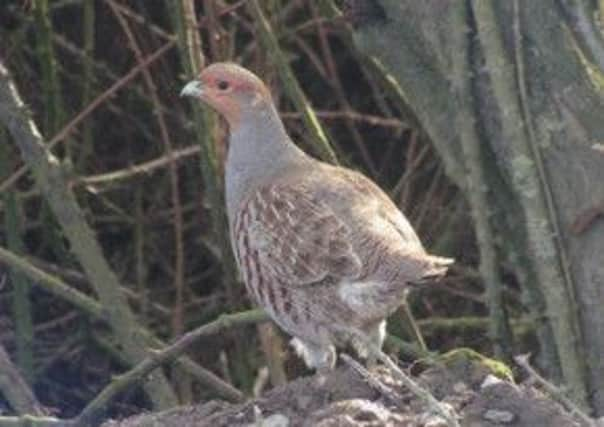Scotland’s favourite birds suffering numbers drop


The mountain species dotterel, one of the rarest breeds in Britain – with two-thirds living in the Cairngorms – has declined by about 40 per cent in just over a decade.
Scientists from the RSPB, Scottish Natural Heritage (SNH) and Natural Research have revealed the startling decline in bird populations in the State of UK Birds 2013 report.
Advertisement
Hide AdAdvertisement
Hide AdThe scientists stated that more research is needed to establish what might be causing the worrying decline in the dotterel and what, if any, impact climate change could have on its habitat and food availability.
The results found that the estimated number of dotterels had fallen from 630 breeding males in 1999, to just 423 breeding males in 2011, continuing a longer-term decline since the first survey in 1987-88, which estimated the number of breeding males at 981.
Other declines of population include the lapwing, a bird of farmland and wetland which has endured a 41 per cent population decline since 1995.
The snipe, a wetland bird, has seen its breeding range shrunk by 31 per cent over the last 40 years.
The population of grey partridge – another farmland bird – has declined by 53 per cent since 1995, while the corn bunting population has declined by 34 per cent since 1995.
The turtle dove, which is not native in Scotland, has suffered a 51 per cent decline in the rest of the UK over the last 40 years.
Mark Eaton, of RSPB, said: “Scotland’s Highlands provide an important home for dotterel and the species’ presence offers a good indicator of the health of our mountain landscapes. To see such a significant drop in their numbers over the past three decades is deeply concerning.
“We are now embarking on research in partnership with Aberdeen University and SNH to examine possible causes of these declines, from climate change to grazing impacts and the effects of atmospheric pollution on sensitive mountain-top vegetation.”
Advertisement
Hide AdAdvertisement
Hide AdEileen Stuart, SNH head of policy and advice, said: “The declining numbers of some birds, particularly the drop in dotterels, is obviously very worrying – although it was good to see that a few birds, such as red kites, goldfinch and the blackcap, are doing well.
“Some species are particularly vulnerable to international factors, such as climate change and fishery policies, but we’re committed to maintaining good quality feeding and breeding areas in Scotland to give them the best chance of survival.
“Farmland birds continue to face difficult challenges, as do some of our more well-known woodland and garden birds.
“We’re obviously concerned by this and are working hard to ensure that schemes, such as the Scottish Rural Development Programme, provide funding where it can have the greatest benefit.”
Colette Hall, a species monitoring officer with the Wildfowl and Wetlands Trust, was concerned that the figures show the breeding ranges of waders are drastically shrinking.
She said: “We’re losing much-loved species like snipe or lapwing completely from parts of lowland Britain.
“A main cause seems to be loss of habitat due to wetlands being drained for farming or development. We need to protect and restore these habitats in order for species like these to survive.”
The list of countryside birds which are declining also includes willow tits, cuckoos, whinchats, starlings, wood warblers and yellow wagtails.